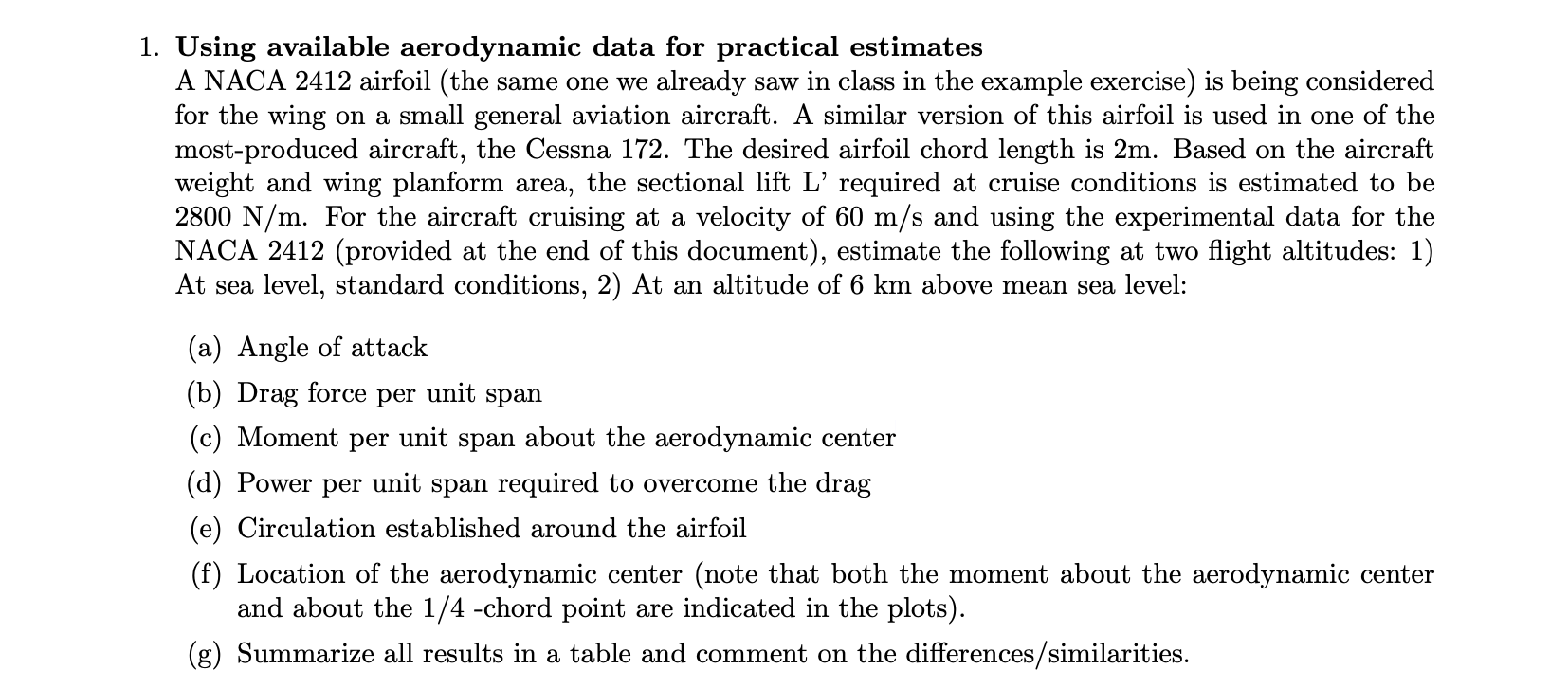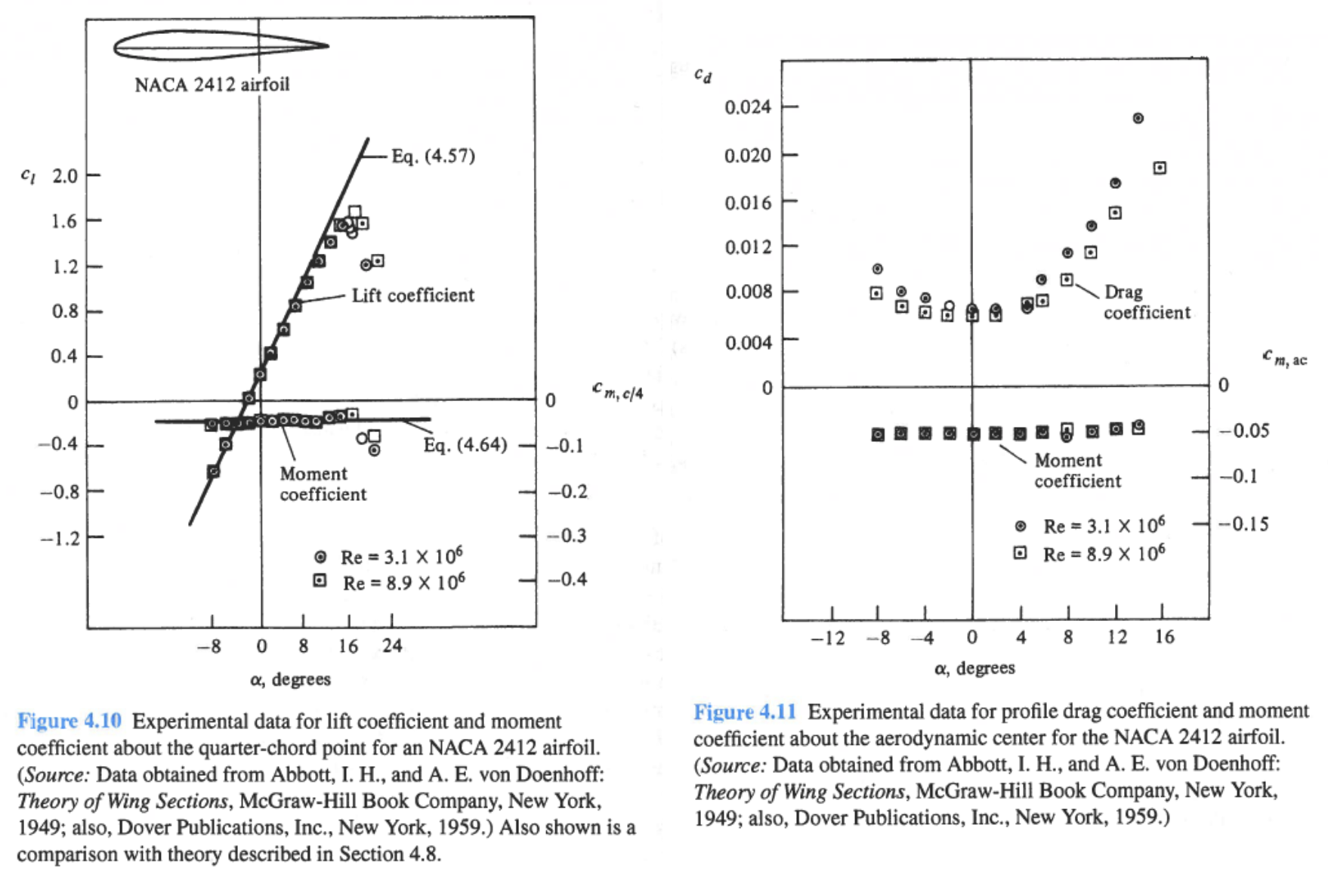Answered step by step
Verified Expert Solution
Question
1 Approved Answer
1. Using available aerodynamic data for practical estimates A NACA 2412 airfoil (the same one we already saw in class in the example exercise)


1. Using available aerodynamic data for practical estimates A NACA 2412 airfoil (the same one we already saw in class in the example exercise) is being considered for the wing on a small general aviation aircraft. A similar version of this airfoil is used in one of the most-produced aircraft, the Cessna 172. The desired airfoil chord length is 2m. Based on the aircraft weight and wing planform area, the sectional lift L' required at cruise conditions is estimated to be 2800 N/m. For the aircraft cruising at a velocity of 60 m/s and using the experimental data for the NACA 2412 (provided at the end of this document), estimate the following at two flight altitudes: 1) At sea level, standard conditions, 2) At an altitude of 6 km above mean sea level: (a) Angle of attack (b) Drag force per unit span (c) Moment per unit span about the aerodynamic center (d) Power per unit span required to overcome the drag Circulation established around the airfoil (f) Location of the aerodynamic center (note that both the moment about the aerodynamic center and about the 1/4 -chord point are indicated in the plots). (g) Summarize all results in a table and comment on the differences/similarities. NACA 2412 airfoil Ca 0.024 Eq. (4.57) 0.020 2.0 0.016 1.6 1.2 0.012 Lift coefficient 0.8 0.4 0.008 0.004 0 -0.4 -0.8 0 Cm, c/4 0 T 88 Eq. (4.64) -0.1 Moment coefficient -0.2 -1.2 -0.3 Re 3.1 X 106 Re 8.9 X 106 -0.4 1 -8 08 16 24 -12 -8 . b Drag coefficient 0 C -0.05 Moment coefficient -0.1 Re 3.1 X 106 -0.15 Re 8.9 106 1 1 0 4 8 12 16 m, ac , degrees Figure 4.10 Experimental data for lift coefficient and moment coefficient about the quarter-chord point for an NACA 2412 airfoil. (Source: Data obtained from Abbott, I. H., and A. E. von Doenhoff: Theory of Wing Sections, McGraw-Hill Book Company, New York, 1949; also, Dover Publications, Inc., New York, 1959.) Also shown is a comparison with theory described in Section 4.8. , degrees Figure 4.11 Experimental data for profile drag coefficient and moment coefficient about the aerodynamic center for the NACA 2412 airfoil. (Source: Data obtained from Abbott, I. H., and A. E. von Doenhoff: Theory of Wing Sections, McGraw-Hill Book Company, New York, 1949; also, Dover Publications, Inc., New York, 1959.)
Step by Step Solution
There are 3 Steps involved in it
Step: 1

Get Instant Access to Expert-Tailored Solutions
See step-by-step solutions with expert insights and AI powered tools for academic success
Step: 2

Step: 3

Ace Your Homework with AI
Get the answers you need in no time with our AI-driven, step-by-step assistance
Get Started


